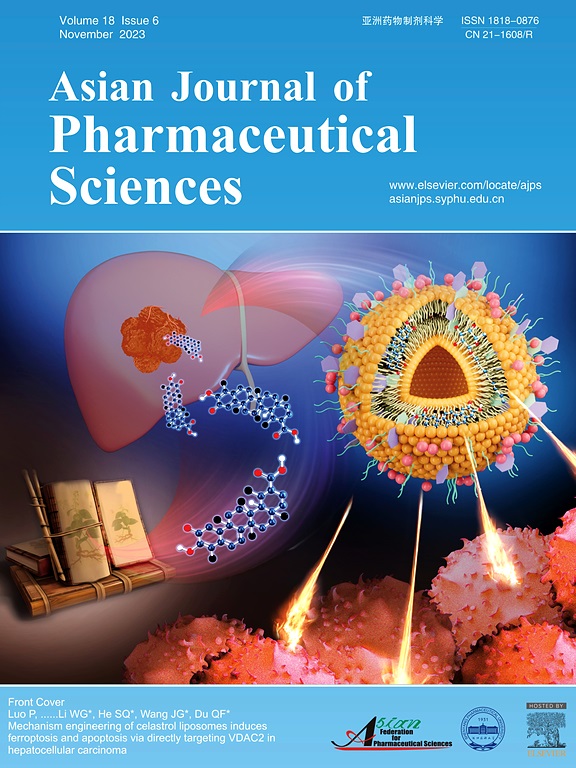含ZNO纳米粒子和IGF-1的多功能三层创面敷料作为全层皮肤损伤愈合的有效生物材料
IF 11.9
1区 医学
Q1 PHARMACOLOGY & PHARMACY
引用次数: 0
摘要
模拟皮肤的层次结构是皮肤组织工程中最重要的策略之一。单层伤口敷料通常不能同时提供多种功能,不能满足所有临床需要。为了最大限度地提高治疗效果,我们制作了一种三层伤口敷料,其中中间层是通过3d打印制作的,由海藻酸盐、黄花胶和氧化锌纳米颗粒(ZnO NPs)组成。上下两层均采用静电纺丝技术;上层由疏水性聚己内酯组成,模拟表皮,底层由Soluplus®和胰岛素样生长因子-1 (IGF-1)组成,促进细胞行为。通过对三层敷料的溶胀性、水蒸气渗透性和拉伸性能的评估,发现在氧化锌NPs和IGF-1释放后,三层敷料表现出令人印象深刻的抗菌活性和细胞刺激。此外,与单层和双层敷料相比,三层敷料可使大鼠模型全层创面愈合更快。总之,有证据证实,三层创面敷料是非常有效的全层创面愈合。本文章由计算机程序翻译,如有差异,请以英文原文为准。

Multifunctional tri-layer wound dressing containing ZNO nanoparticles and IGF-1 as an efficient biomaterial for healing of full thickness skin injuries
Mimicking the hierarchical structure of the skin is one of the most important strategies in skin tissue engineering. Monolayer wound dressings are usually not able to provide several functions at the same time and cannot meet all clinical needs. In order to maximize therapeutic efficiency, herein, we fabricated a Tri-layer wound dressing, where the middle layer was fabricated via 3D-printing and composed of alginate, tragacanth and zinc oxide nanoparticles (ZnO NPs). Both upper and bottom layers were constructed using electrospinning technique; the upper layer was made of hydrophobic polycaprolactone to mimic epidermis, while the bottom layer consisted of Soluplus® and insulin-like growth factor-1 (IGF-1) to promote cell behavior. Swelling, water vapor permeability and tensile properties of the dressings were evaluated and the Tri-layer dressing exhibited impressive antibacterial activity and cell stimulation following by the release of ZnO NPs and IGF-1. Additionally, the Tri-layer dressing led to faster healing of full-thickness wound in rat model compared to monolayer and Bilayer dressings. Overall, the evidence confirmed that the Tri-layer wound dressing is extremely effective for full-thickness wound healing.
求助全文
通过发布文献求助,成功后即可免费获取论文全文。
去求助
来源期刊

Asian Journal of Pharmaceutical Sciences
Pharmacology, Toxicology and Pharmaceutics-Pharmaceutical Science
CiteScore
18.30
自引率
2.90%
发文量
11
审稿时长
14 days
期刊介绍:
The Asian Journal of Pharmaceutical Sciences (AJPS) serves as the official journal of the Asian Federation for Pharmaceutical Sciences (AFPS). Recognized by the Science Citation Index Expanded (SCIE), AJPS offers a platform for the reporting of advancements, production methodologies, technologies, initiatives, and the practical application of scientific knowledge in the field of pharmaceutics. The journal covers a wide range of topics including but not limited to controlled drug release systems, drug targeting, physical pharmacy, pharmacodynamics, pharmacokinetics, pharmacogenomics, biopharmaceutics, drug and prodrug design, pharmaceutical analysis, drug stability, quality control, pharmaceutical engineering, and material sciences.
 求助内容:
求助内容: 应助结果提醒方式:
应助结果提醒方式:


